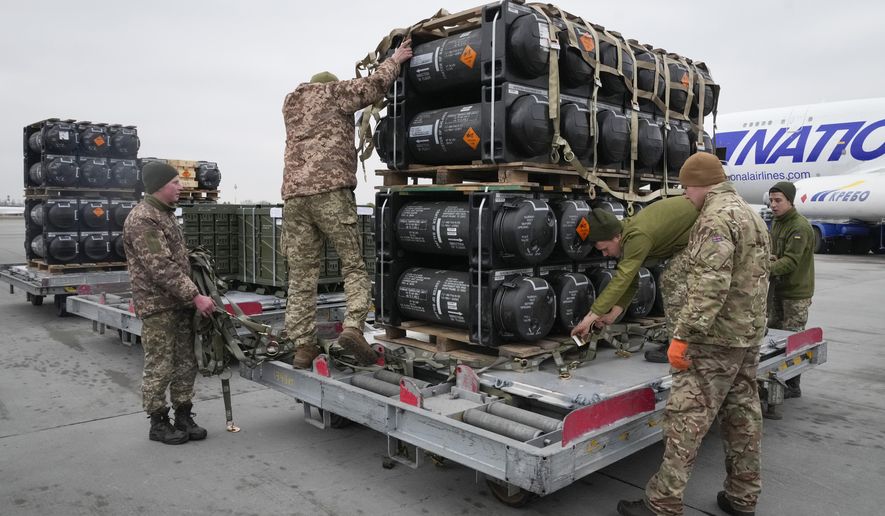Pentagon officials say they are considering enhanced artillery support to Kyiv, enabling Ukrainian forces to take on invading Russians at much greater distances than with weapons such as a Javelin anti-tank missile.
Deputy Secretary of Defense Kathleen Hicks said Tuesday the Biden administration is in a “continuing dialogue” with Ukrainian defense officials about the types of firepower available to them from NATO countries to fend off Russian attacks. President Biden and NATO leaders have ruled out sending Western troops to the fight as well as certain classes of military aid that could provoke a direct fight with a nuclear-armed Russia.
“We will continue to look at the type of capabilities that the Ukrainians are asking for in terms of how to give them more range and distance,” Ms. Hicks said during a briefing to the Washington, D.C.-based Defense Writers Group. “Are we looking at a wide range of systems in doing that? Yes. Is there a willingness to consider longer-range armaments? Yes.”
Ms. Hicks said she wasn’t prepared to announce any new developments on the firepower front, saying any major enhancement would require White House approval.
U.S. military leaders began reexamining troop and weapons deployments in Europe even before Russian President Vladimir Putin ordered his troops into Ukraine’s disputed Donbas region. It began in 2014 after Russia annexed Crimea.
“But we’ve really leaned into those in the last several months,” Ms. Hicks said. “We already had forces forward, for instance, in the Baltics, Romania [and] Bulgaria on a rotational basis.”
But any major changes in force posture will probably have to wait for the summer NATO summit in Madrid, she said.
The U.S. has provided $2 billion to support Ukraine, including $1.7 billion since the start of the invasion, but Ms. Hicks acknowledged an extended war would require a continuing resupply of weapons. She said the Defense Department must work with allies and industry to give Ukraine what it needs to continue its fight while not drawing too much from the U.S. supply.
U.S. planners also have to weigh increased resources in Europe against what Defense Secretary Lloyd Austin has repeatedly described as the “pacing challenge” for American forces posed by a rising China in Asia.
The question, she said, is: “How do we make sure we have what we need but also support others?” she said.
• Mike Glenn can be reached at mglenn@washingtontimes.com.




Please read our comment policy before commenting.